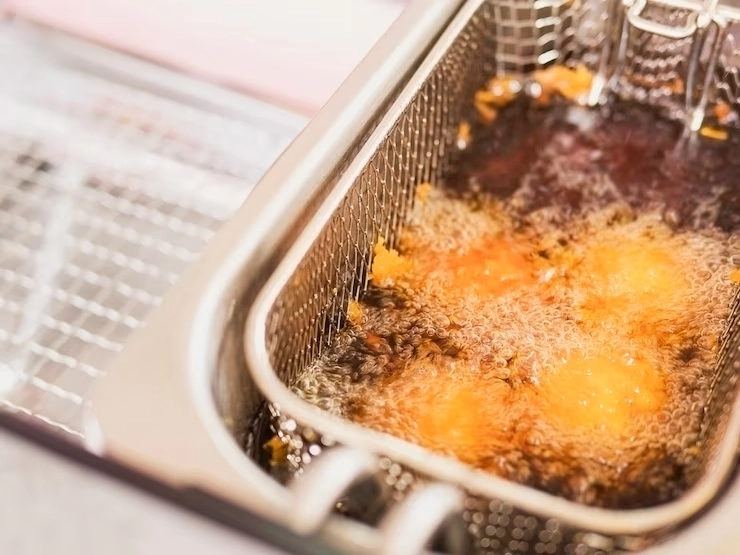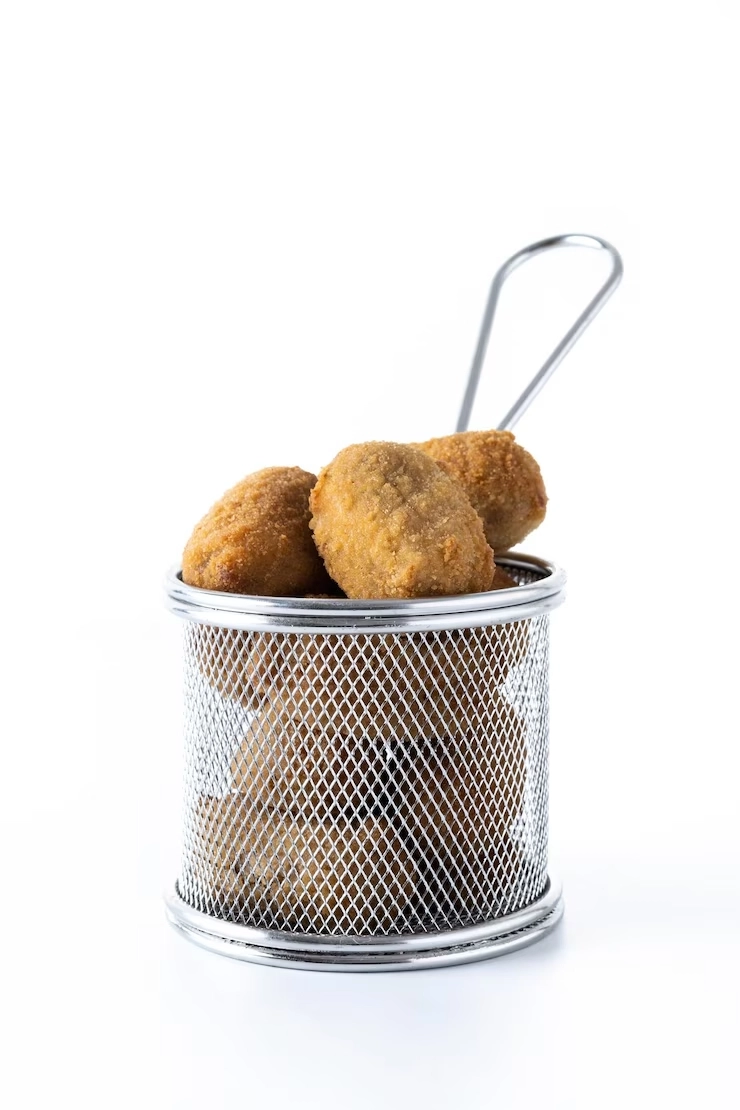5 Days a week from 8:30 am to 5:30 pm
Key Safety Measures When Operating a Deep Fryer in Restaurants
Deep fryers are essential in restaurant kitchens, producing crunchy, tasty meals. Yet, they present considerable dangers if improperly managed. This guide examines crucial safety steps to guarantee secure use, reduce risks, and improve productivity. Discover how to avoid fires, manage oil carefully, and rely on SIMPLE Kitchenware as your dependable ally for safe, top-notch frying solutions.
What Are the Common Hazards Associated with Deep Fryer Usage?
Deep fryers are critical for restaurant tasks but bring multiple threats in hectic kitchen settings. Identifying these perils is the initial move toward creating a safe workplace. Below, we detail the main dangers and how to tackle them effectively.
Potential Fire Risks and How to Prevent Them
Deep fryers function at elevated temperatures, often surpassing 350°F, making fire threats a major issue. Careless handling or equipment failures can spark flames, resulting in substantial harm.
Prevention Strategies:
- Set up fire suppression systems above fryers. They help contain potential flames.
- Keep a Class K fire extinguisher nearby. It’s ideal for grease fires.
- Use a dependable thermometer to check oil temperature regularly.
- Avoid overloading frying baskets. This prevents splashes.
- Arrange periodic electrical checks. They ensure wiring remains intact.
These actions greatly lower fire risks. They also help maintain a safer kitchen.
The Dangers of Oil Spills and Slip Hazards
Oil spills are common in busy kitchens. They create slick floors, raising the chance of falls and injuries.
- Causes: Spills happen during oil transfers or filter swaps. Accidental splashes also contribute.
- Consequences: Falls may cause burns or broken bones. They can also lead to concussions, halting operations.
Prevention Tips:
- Place non-slip mats around fryers. They improve grip.
- Wipe spills quickly with absorbent pads. This keeps floors safe.
- Train staff on careful oil-handling methods. It reduces accidents.
- Use proper drainage for used oil. It prevents spills.
These measures ensure a slip-free space. They protect workers and keep operations smooth.
Health Risks from Improper Handling of Hot Oil
Hot oil, often above 350°F, brings serious health dangers. These include burns and breathing problems from extended exposure to fumes.
- Burns: Contact with hot oil causes severe, lasting injuries.
- Fumes: Oil vapors can irritate lungs. This is worse in poorly aired spaces.
- Physical Strain: Carrying heavy oil jugs may strain muscles or joints.
Mitigation Measures:
- Provide staff with protective gear. Heat-resistant gloves and aprons work well.
- Ensure good kitchen ventilation. It clears harmful vapors.
- Use tools for safe oil handling. They ease physical effort.
Focusing on worker safety reduces health risks. It also keeps the team efficient.
How Can You Ensure Safe Operation of a Deep Fryer?
Safe fryer use depends on correct setup, regular upkeep, and thorough worker training. Below, we outline key steps to achieve this.
Proper Placement and Installation Guidelines
Thoughtful fryer placement boosts safety and streamlines kitchen flow.
- Location: Keep fryers far from flammable items and water sources. This prevents fires or splashes.
- Ventilation: Place fryers under a hood with strong airflow (100-150 CFM). It removes vapors.
- Stability: Set fryers on flat, non-slip surfaces. This stops tipping during use.
|
Placement Consideration |
Recommendation |
|
Distance from Walls |
At least 16 inches |
|
Ventilation |
Hood with 100-150 CFM |
|
Surface Type |
Non-slip, heat-resistant |
Proper setup lays the groundwork for safe, efficient fryer use.
The Importance of Regular Maintenance and Cleaning
Consistent upkeep prevents breakdowns and extends equipment life. It also ensures food safety. Ignoring maintenance can cause oil buildup or uneven heating. These raise fire risks.
Steps for Effective Cleaning Procedures
Thorough fryer cleaning is vital for hygiene and performance.
- Cool Down: Let oil cool below 100°F before draining. This avoids burns.
- Drain Oil: Use a filtered pump or heat-proof jug. It removes oil safely.
- Scrub Interior: Clean the fryer tank with a soft sponge. Use a food-safe degreaser.
- Rinse and Dry: Wash with warm water. Dry fully to prevent rust.
- Clean Baskets: Soak frying basketsin hot, soapy water. Then scrub and rinse.
Regular cleaning keeps fryers in prime condition. It also lowers safety risks.
Identifying and Addressing Equipment Malfunctions
Issues like uneven heating or faulty thermostats can harm safety and food quality.
- Thermostat Checks: Test monthly for accurate readings.
- Heating Element Inspections: Check for rust or wear. These affect performance.
- Electrical Monitoring: Replace frayed cords or broken plugs right away.
- Professional Inspections: Schedule checks every six months. They catch issues early.
Proactive upkeep reduces downtime. It also boosts fryer dependability.
Recommended Safety Gear for Kitchen Staff
Proper gear is crucial for shielding workers from burns and slips during fryer use.
- Heat-Resistant Gloves: Protect hands from hot oil and baskets.
- Aprons: Guard clothing and skin from oil splashes.
- Non-Slip Footwear: Prevent slips on greasy floors.
- Safety Goggles: Shield eyes from oil splatter or fumes.
|
Gear Type |
Purpose |
Recommended Material |
|
Gloves |
Burn protection |
Silicone or Kevlar |
|
Aprons |
Splash protection |
Vinyl or polyester |
|
Shoes |
Slip prevention |
Rubber sole |
|
Goggles |
Eye protection |
Polycarbonate |
Equipping workers with suitable gear creates a safer kitchen.
Properly Handle Hot Oil
Careful oil handling is key to avoiding burns and keeping fryers efficient. Below are essential practices for managing hot oil.
Safe Methods for Adding or Removing Oil
- Adding Oil: Pour slowly with a funnel. This avoids splashing.
- Removing Oil: Use a pump or heat-proof jug. Never pour hot oil into plastic.
- Filtering Oil: Filter daily to clear debris. This extends oil life and improves food quality.
These methods lower spill and burn risks during oil handling.
Monitoring Oil Temperatures to Avoid Overheating
Keeping oil between 325°F and 375°F is vital for safety and food quality.
- Use a digital thermometer for precise checks.
- Choose fryers with built-in temperature controls. They adjust automatically.
- Avoid rapid temperature shifts. They harm oil quality.
Steady monitoring prevents overheating. It also reduces fire risks.
Guidelines for Disposing of Used Cooking Oil
Wrong disposal can damage the environment and clog pipes.
- Cool Oil: Let oil cool fully before handling.
- Store Safely: Move to sealed, recyclable jugs.
- Recycle: Work with local recycling services.
- Avoid Drains: Never pour oil into sinks or pipes.
Responsible disposal protects the environment. It also meets regulations.
Overview of SIMPLE’s High-Quality Products
SIMPLE crafts an array of kitchen tools built for toughness and simplicity. Their frying baskets, forged from solid stainless steel, endure wear even in relentless use. Whether you’re crisping fries or wings, SIMPLE brings steadfastness.
Conclusion
Running a deep fryer safely in restaurants requires care, proper tools, and thorough training. Address fire threats, oil spills, and health dangers. Follow upkeep and safety rules to ensure a secure kitchen. Partnering with SIMPLE Kitchenware gives access to top-quality, safety-focused kitchenware. These improve efficiency and dependability.
FAQs
What Should I Do If a Fire Breaks Out in the Deep Fryer?
- Stay Calm: Disconnect the fryer’s power if it’s safe.
- Use a Class K Extinguisher: Aim at the fire’s base. It suppresses grease flames.
- Activate Fire Suppression: Trigger the system if available.
- Evacuate: If the fire grows, leave immediately. Then call emergency services.
How Often Should I Replace the Cooking Oil?
- Daily Filtering: Filter oil daily. It removes debris and maintains quality.
- Replacement Timing: Replace every 7-14 days. This depends on usage and oil condition.
- Signs for Replacement: Dark color or smoky smell shows oil breakdown. Excessive foaming also indicates it.
Is It Necessary to Train All Staff on Deep Fryer Safety Measures?
- Yes: All workers near fryers need training.
- Training Scope: Cover operation and cleaning. Include emergency steps and gear use.
- Frequency: Offer initial training. Provide refreshers every six months. This reinforces safety habits.



